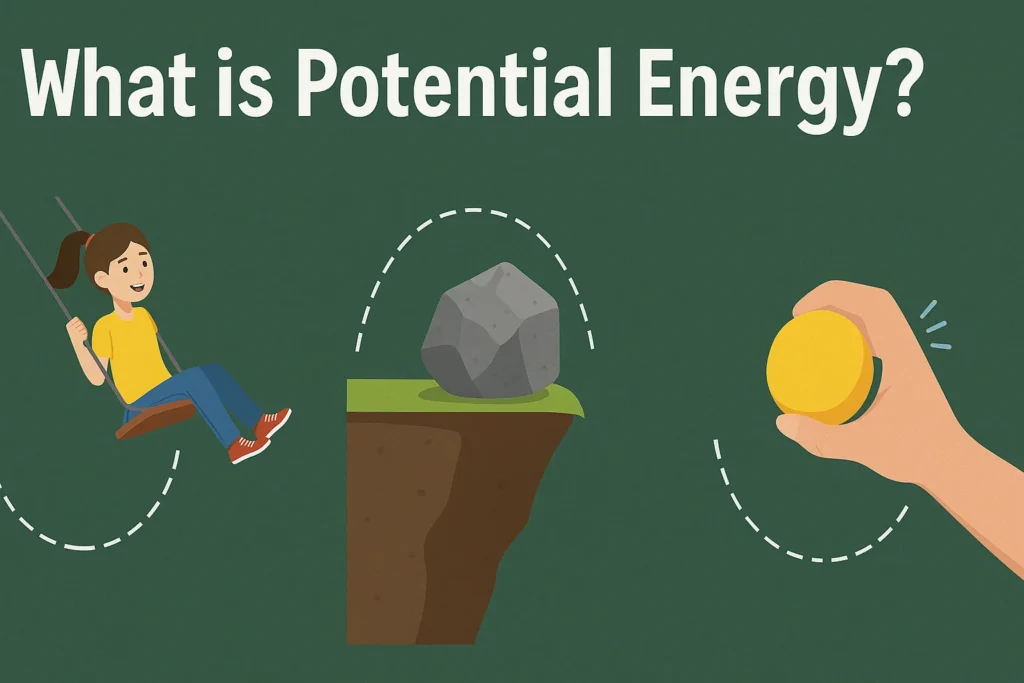Potential energy is stored energy that an object or a system possesses because of its position or structure. In contrast to kinetic energy—energy derived from motion—potential energy is energy that is stored to be used in the future.

Why It Happens
Potential energy is when objects interact through conservative forces, such as springs or gravity. The energy is based on how they are positioned in relation to one another.
For example:
- Lifting a very heavy ball up from the ground accumulates gravitational potential energy.
- When a rubber ball is squeezed, it builds up elastic potential energy.
How it is calculated
The standard formula for gravity close to the Earth’s surface is:
PE=m×g×h
- m = mass (kg)
- g = gravitational acceleration (~9.8 m/s²)
- h = height in relation to a point of reference
This shows potential energy increases with mass and height.
Types of Potential Energy
Potential energy exists in various forms based on how it is stored:
- Gravitational – Stored by raising mass in a gravity field.
- Elastic – Stored in objects like springs or rubber bands when deformed.
- Chemical – Stored in bonds between atoms (e.g. in food or batteries).
- Electrical – Energy in a charge separation or electric field.
- Nuclear – Stored within atomic nuclei.
All these forms depend on force-based positioning or configuration.
FAQs
Q1: What is the basic principle of potential energy?
It is the energy stored due to position or configuration within a system where forces exist (like gravity or elastic force).
Q2: Does potential energy become kinetic energy?
Yes—stored potential energy is likely to be transformed into kinetic energy when the constraints are lifted or the object drops or expands.
Q3: Are there other forms which are neither gravitational nor elastic? Yes—chemical, electrical, and even nuclear forces can store potential energy based on particle arrangements.
Q4: What unit is used for potential energy? The same as other energy types: the Joule (J), which equals kg·m²/s².
References
The information in this article is based on insights from respected organizations in the energy field. We have reviewed content from the following sources to ensure accuracy and relevance:
Posted by Abu Talha
With a background in science at the A-level, Abu Talha has studied subjects including physics, chemistry, mathematics, and biology. Along with his more than 1.5 years of experience in digital marketing, he is passionate about writing about electric vehicles, sustainable energy, and how emerging technologies are influencing the future.


